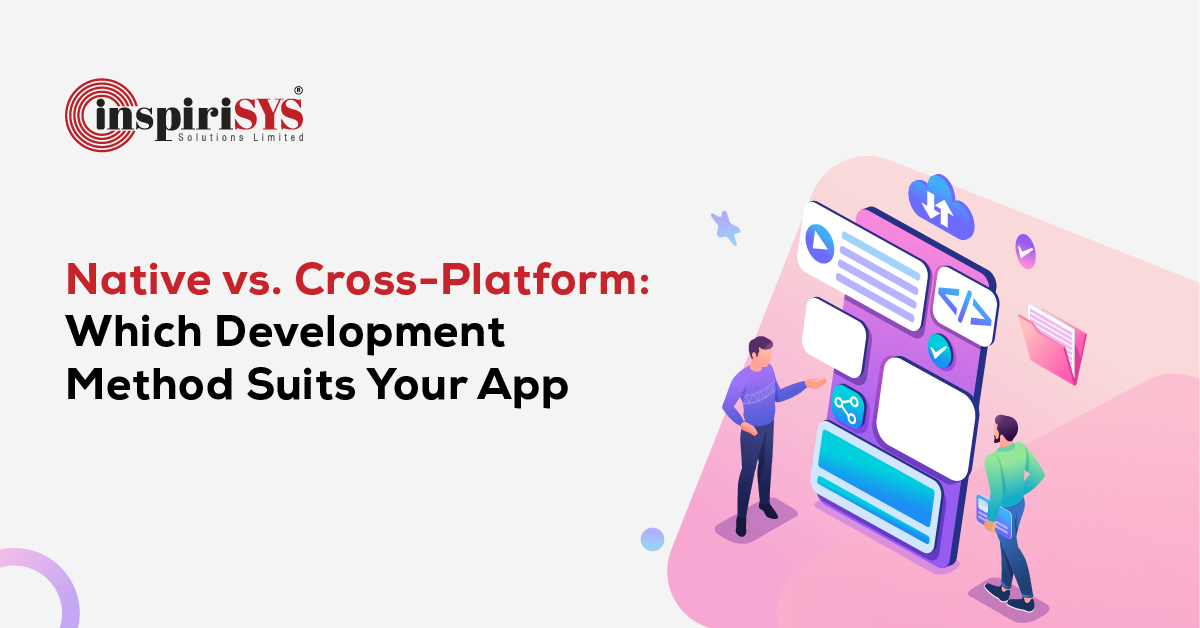In today's fiercely competitive world, mobile applications are being created for every possible service. Businesses are keenly aware of the importance of developing robust applications with top-of-the-line features and user interfaces that are second to none.
Meanwhile, customers and application users are making critical choices based on which apps can deliver exceptional results. As a result, companies are taking a cautious approach when it comes to mobile application development. They are carefully weighing the pros and cons of native versus cross-platform approaches before embarking on any new mobile application project.
A survey by Statista says, the annual number of app downloads worldwide in 2023 will be about 299 billion. This number has risen from 194 billion in 2018.
.png)
Moreover, choosing the right approach is crucial for businesses because it directly affects the application's performance, user experience, and overall success. Native applications are built for a specific platform, such as iOS or Android, using platform-specific programming languages and tools. As a result, they have unparalleled performance and provide a seamless user experience. However, creating a native app can be time-consuming and costly, as it requires expertise in multiple programming languages and tools.
On the other hand, cross-platform applications are built to work on multiple platforms using a single codebase, making them a cost-effective and efficient solution for businesses. While they may not offer the same level of performance as native apps, advancements in cross-platform technologies have closed the gap considerably. Ultimately, the decision between a native and cross-platform approach depends on several factors, including the business's specific needs and goals, the target audience, and the available resources.
In conclusion, mobile application development is a critical process that requires careful consideration and planning. Businesses must choose the right approach to ensure that their application meets the highest standards of quality and user experience. With the right approach and technology, businesses can create applications that not only meet but exceed their customers' expectations, providing them with exceptional value and experiences.
Before we get into the detailed comparison of native and cross-platform app development approaches, let’s get an overview of how both methods work while building an application.
What is Native App Development?
Native application development is an approach where developers use specific design languages and tools to produce an application exclusively for a device or platform. Official Software Development Kits (SDKs) and programming languages are used to make applications fit a specific platform, such as Android or iOS.
Developers can utilize a diverse set of toolkits provided by Google and Apple to create efficient native applications for their platforms. To create native iOS applications, developers use Xcode with either Swift or Objective-C, and they rely on UIKit classes to publish the application. Conversely, for native Android applications, programmers use Java or Kotlin with Android Studio.
Why consider Native App Development?

Better Security: Built-in security tools available on native apps makes it possible to apply data encryption, detect fraud, and other security breaches. Businesses that build applications to store sensitive data of users can rely on native apps as they have better security features.
Great User Experience: Native apps can take full advantage of the hardware and software capabilities of the device, providing a better user experience. Because the apps are built to fit specific hardware and software capabilities. Unique design guidelines followed while developing native apps make the app user-friendly and thus the experience improves.
Minimal Bugs: Native app development can help minimize bugs and improve the overall quality of the app by leveraging the platform's official programming languages, testing tools, and support resources. By following best practices and adhering to the platform's guidelines, developers can create apps that are reliable, and free of bugs.
High Performance: Top performance is attained by leveraging the hardware and software resources of the device, optimizing the app for the platform, using the platform's native rendering engine, providing offline support, and taking advantage of multithreading.
Offline Functionality: Native app development provides several ways to implement offline functionality, including local data storage, background synchronization, progressive web apps, and native APIs. This lets users continue to access important data and features even when there is no internet connectivity.
Why not to consider Native App Development?
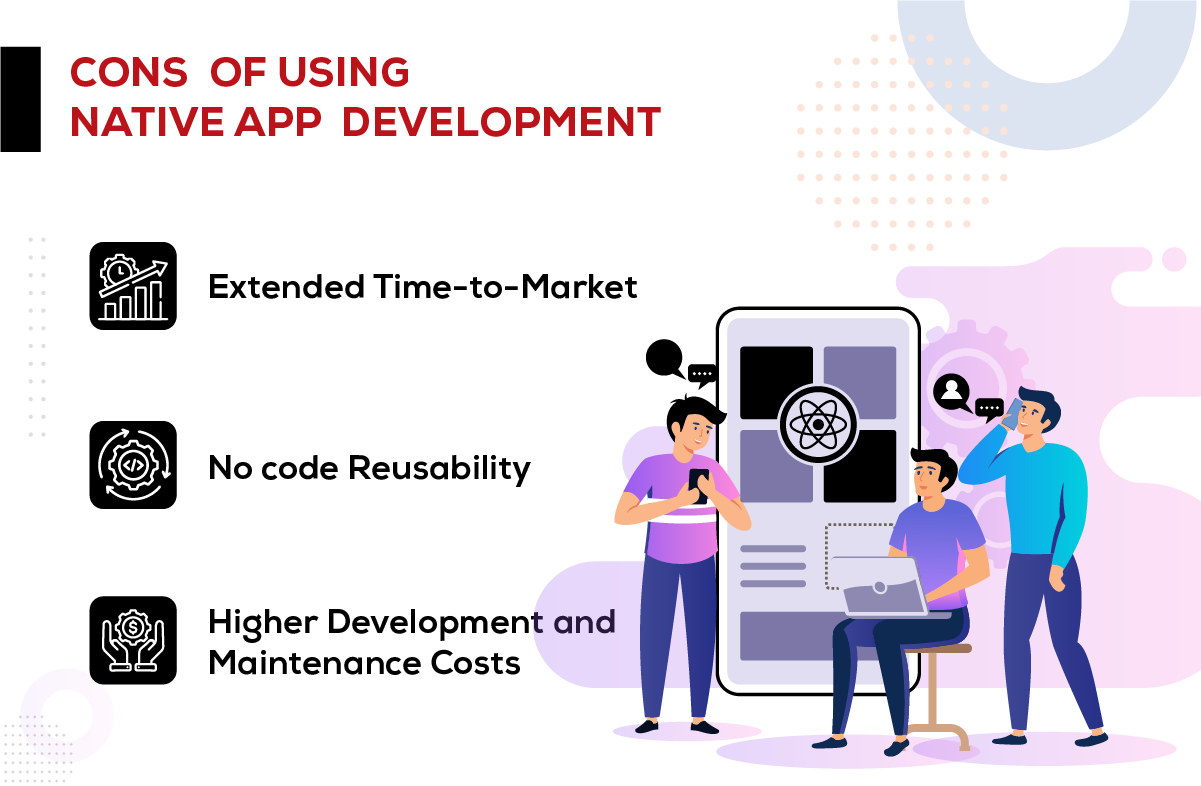
Extended Time-to-Market: Native app development can result in an extended time-to-market due to the platform-specific development, multiple versions for different platforms, app store approval process, integration with third-party tools, debugging, and testing.
No code Reusability: Native app development does have limited opportunities for code reusability compared to other development approaches. Simply because they use platform-specific languages and APIs.
Higher Costs: Design requirements, development time, maintenance, and testing are some factors that make native apps costlier. Developers with specialized skills are required to handle complex requirements, eventually resulting in higher costs.
Below mentioned are a few examples of apps built with a native app development approach
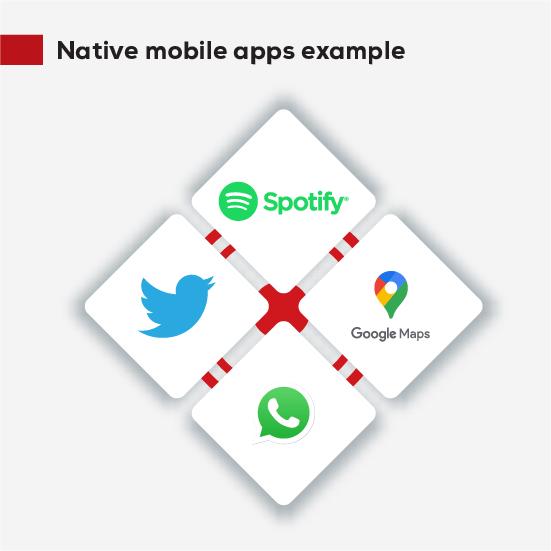
What is Cross-platform App Development?
As the name suggests, applications built using cross-platform are developed with a single code base that will work on different platforms and operating systems. Cross-platform apps are easy to implement, robust, and affordable for businesses with budget constraints.
Simply, a team of developers uses cross-platform frameworks to build an app that can run across operating systems like Android and iOS. Tools used for cross-platform development include Flutter, React Native, Xamarin, and Ionic.
Why consider a Cross-platform App Development Approach?
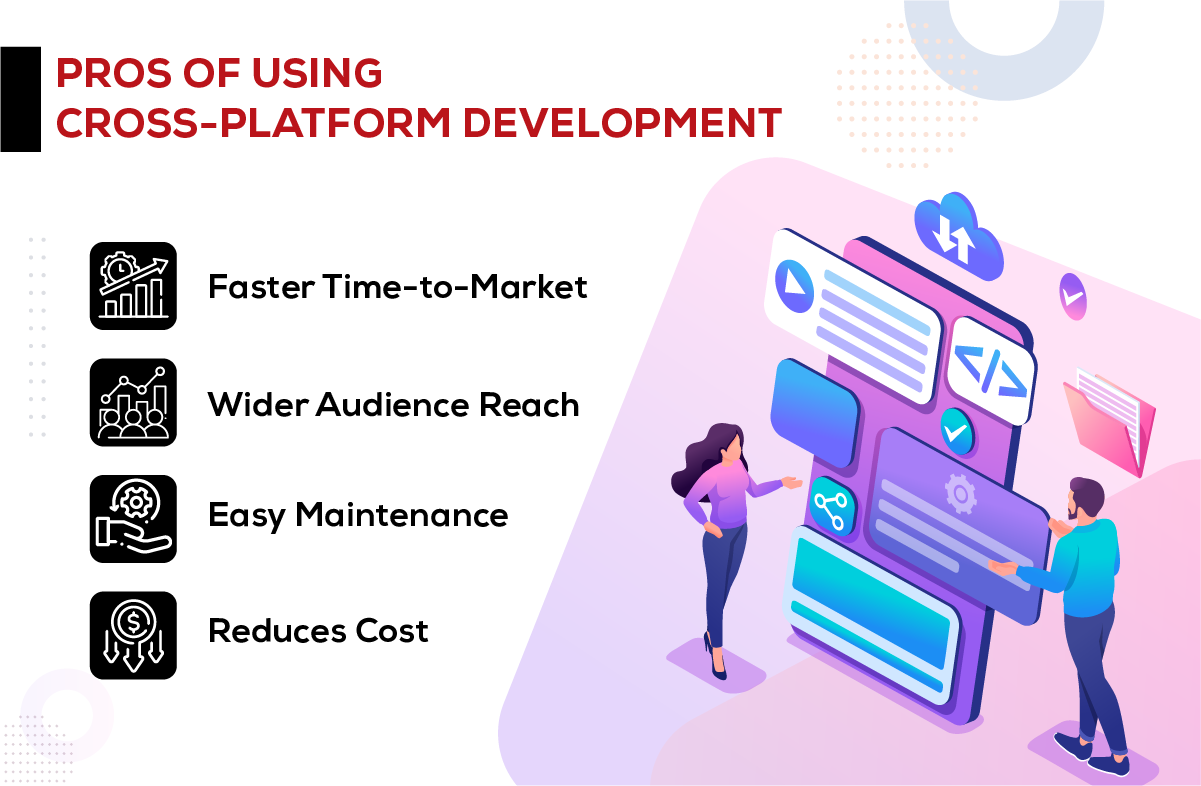
Faster Time-to-Market: Cross-platform development can help to reduce the time-to-market for mobile apps by streamlining the development process and reducing the need for platform-specific expertise. This can be a significant advantage in today's fast-paced and competitive app market.
Wider Audience Reach: Mobile apps developed using a cross-platform development framework can help to reach a wider audience by providing multi-platform support, ensuring a consistent user experience, and lowering barriers to entry. Using this advantage small businesses can maximize the reach of their apps and expand faster.
Easy Maintenance: Cross-platform development makes maintenance of mobile apps easier by reducing the need for platform-specific updates, identifying and fixing bugs more quickly, ensuring a consistent user experience, and reducing development costs. Developers can maintain and update their apps over time with ease.
Reduce Costs: The pre-built components available on cross-platform development allow developers to save time and development costs. The flexibility to reuse the existing code cancels out the need for skilled (well-paid) developers to program again. Hence startups can rely on this approach to save money.
Why not to consider a Cross-platform Development Approach?
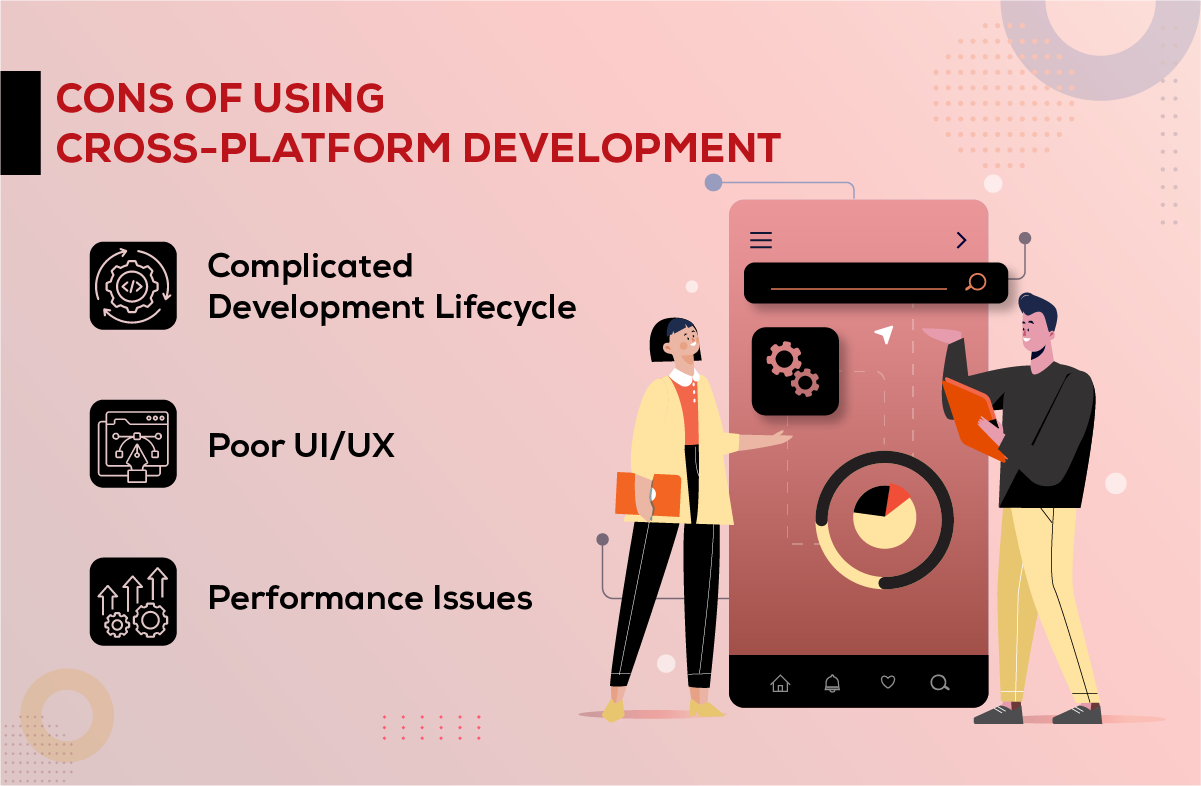
Complicated Development Lifecycle: Though skillful developers are used while developing an application that will work across platforms, the development lifecycle for an adaptable app is complex. Tools and platform limitations along with integration challenges make development tougher and this will be a situation to handle when cross-platform development is used.
Poor UI/UX: When using a cross-platform development approach, there are certain challenges that developers face with respect to UI/UX design. There are inconsistencies in UI because each platform has its own guidelines and conventions.
Performance Issues: Using appropriate tools and techniques in cross-platform development is very critical. Performance issues are very common in cross-platform approaches and this can be easily felt with the slow interface, weaker capabilities of the app, and memory management.
Below mentioned are a few examples of apps built with a cross-platform app development approach
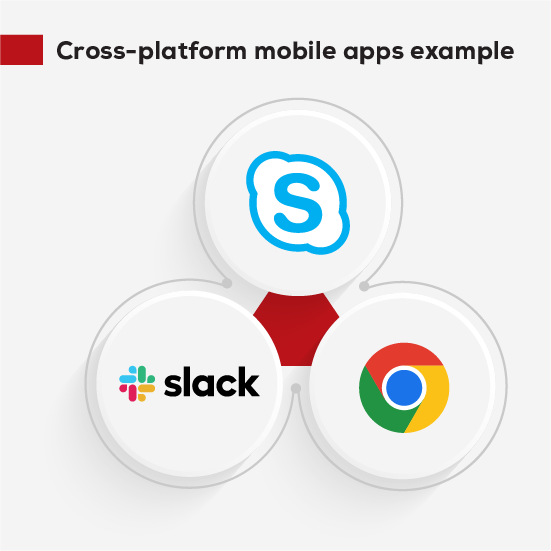
Native vs. Cross-platform apps: The comparison
By referring to the comparison table below, you will get a clear understanding of the strengths and weaknesses of both app development approaches. This will enable you to make an informed decision about selecting the development style to create your enterprise application.
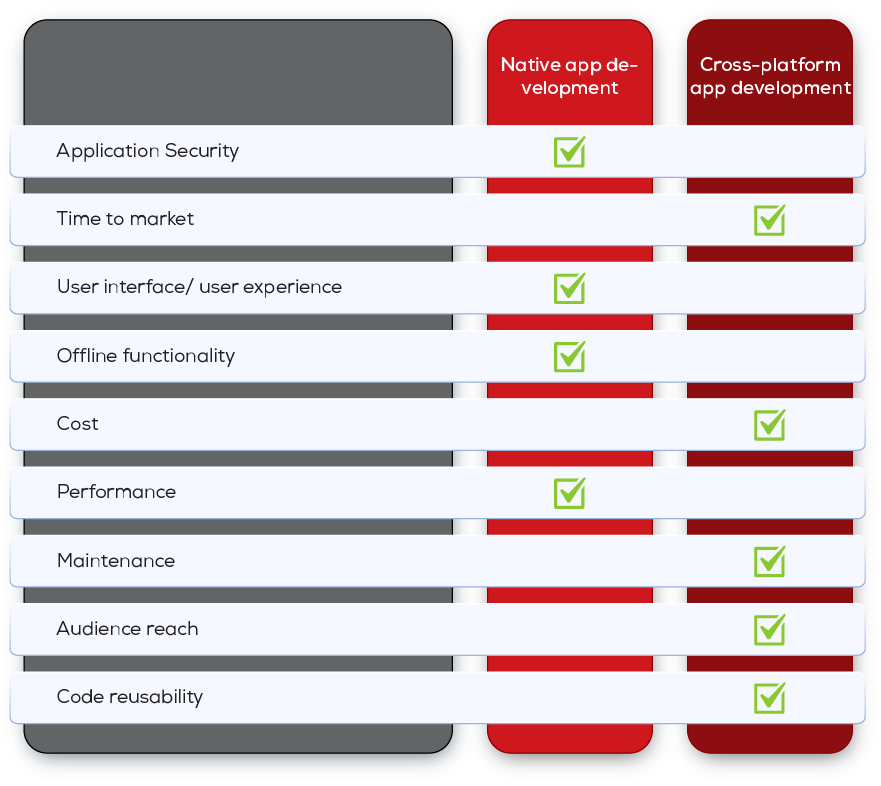
The Verdict
Once you narrow down the target audience you want to reach with your new application, you have to think wisely before choosing your app development approach. Although startups with limited budgets and less skilled resources tend to opt for cross-platform development to achieve faster results, larger enterprises never compromise on standards and therefore opt for native platform development. However, there can arise situations where a cross-platform development style will satisfy all the needs of a large business with particular needs. This clearly denotes that any business, small or big, must analyze its need for an application and set goals that are in line with the development approach.
Simply, Native app development can be a good choice for businesses that want to create a high-quality, high-performance mobile app with a native look and feel. Whereas, cross-platform app development will be the best choice for businesses that want to create a cost-effective mobile app to run on multiple platforms.


